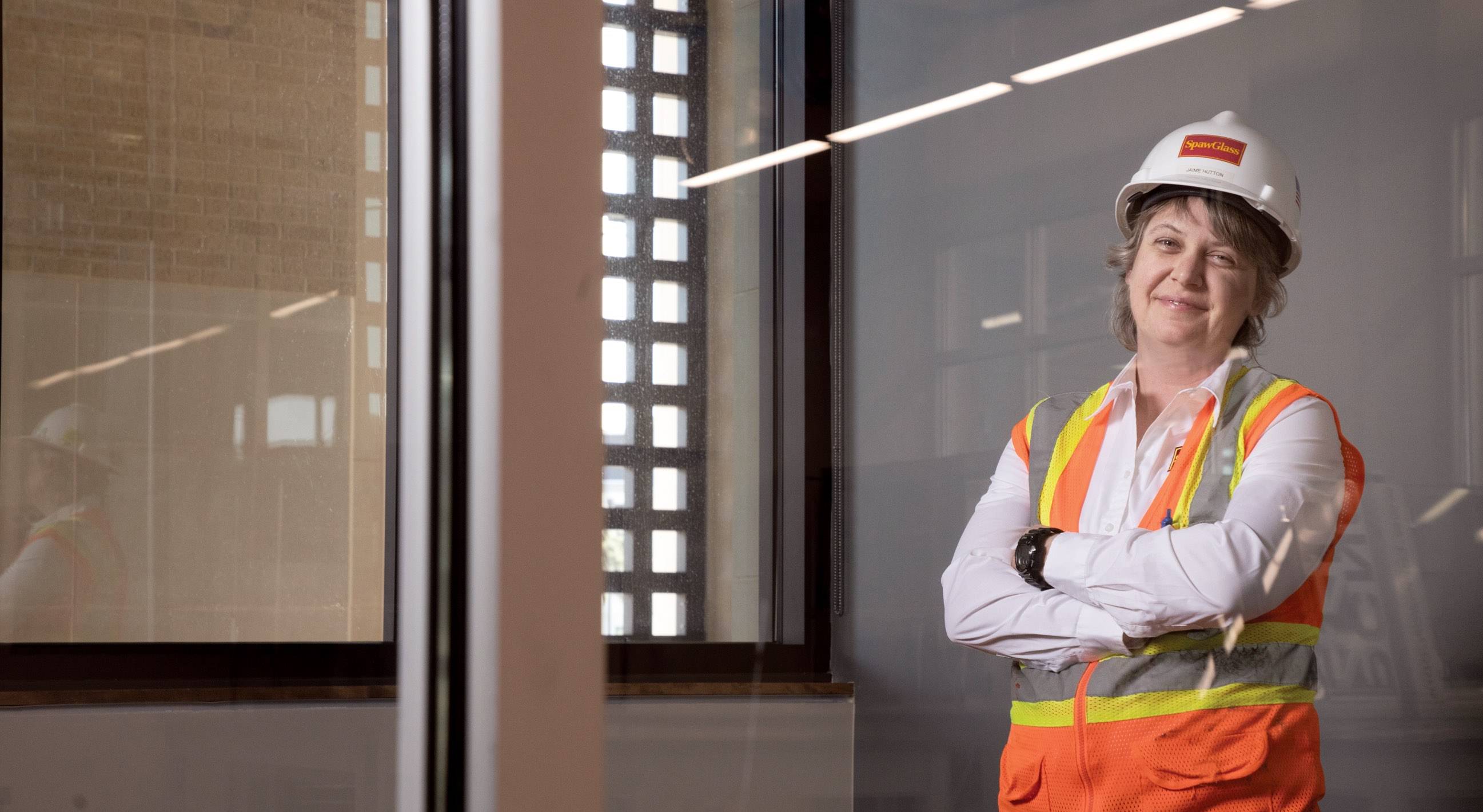
Construction Management brings creative challenges
by Travis E. Poling
Texas has a hot job market for those who can build
Building a hospital, office building, school, or bridge takes complicated calculations and massive planning before the first shovel of dirt is turned. It is when that planning doesn’t meet with the reality of circumstance that project managers fall back on another set of skills, those of creativity and adaptation.
“They’re problem solvers, is what they are. They come up with more creative ways to build the project on time and on budget,” says Dr. Gary Winek, a professor at Texas State University’s Department of Engineering Technology and coordinator of the construction science and management program.
Rearranging schedules, ensuring the proper delivery and placement of materials, and dealing with unexpected challenges take a combination of training, knowledge of problem-solving skills, and the use of tools new and old to get to the job done. The application of those skills, Winek says, is not always by rote but requires critical thinking and creative solutions to be used by individuals or teams to get the job done.
“When you hire a project manager, you’re getting their professional judgment, and that’s where the creativity comes in,” Winek says.
Professionals in the construction industry are so much in demand that there is concern that universities may not be able to keep up the supply of construction management graduates to build and rebuild the infrastructure of the nation. With the Texas population expected to grow by 20 million residents in the next 20 years, the need for new buildings, roads, and other infrastructure projects is estimated to increase by about 50 percent.
“There is an extreme shortage of construction management people out in the world,” Winek says. Texas State’s construction science and management program is maxed out to help meet that demand.
Technology has helped with the problem-solving and the basic tenets of projects that are on time and on budget, but its application by an agile human mind is key, says Dr. Jim Wilde, professor and director of the concrete industry management program. “The software helps, but it’s an art form.”
Students get a chance to show their creativity in concrete, a subset of the construction industry, each year with competitions such as making bowling balls out of the compound. They are tested for how round and strong they are. Each student team brings two concrete “bowling balls” to the competition. “They had a fun time getting that through security at the airport,” Wilde says. Other creative tests in competition include devising environmentally sustainable concrete.
“Every project is different. It’s always an opportunity to apply lessons learned, best practices, and computer modeling,” says Matt Bearden, a commercial construction manager at SpawGlass. “I had been in the construction industry before and it was just pick up your hammer and get it done.” The team approach, he says, is much better because it puts professionals with different or overlapping skills and situational experiences together for creative problem-solving.
Bearden, who has been on a major hospital project in McAllen, says his first project after his 2015 graduation from Texas State was a natatorium in the coastal town of Flour Bluff. They encountered ground water five feet into a 30-foot dig in the sand. The team devised a plan to de-water the area, a process that worked well until they were hit with 15 inches of rain in a week.
“There’s a tremendous unknown when you dig a hole,” Bearden says of the need to have a system in place to come up with solutions to challenges initial planning didn’t foresee.
Joel Stone is a 1988 Texas State construction and industrial technology graduate and CEO of SpawGlass. His company has about 40 Bobcats on the staff and continues to recruit heavily from the construction science and management program.
Jaime Hutton, a 2016 Texas State graduate, was brought in by SpawGlass to work on the $120 million Bruce and Gloria Ingram Hall. Hutton says she finds her strength in planning. “I love building things for people. You come to work every day, and something is different,” she says. “It’s very rewarding, especially when you plan for that.”
Stone says SpawGlass takes well-trained graduates and puts them through an internal training on its nine core processes, which have both a practical and creative approach. “Texas State has a program that has really evolved,” Stone said from the company’s executive offices in New Braunfels, one of 10 offices across the state.
“If you follow our nine core processes, that doesn’t create robots but frees up more time to do creative problem-solving,” Stone says. Beyond the basic training in the company is a leadership training program that includes “a good amount of time in using creative problem-solving tools,” he says. “You can’t really identify all the situations, so you have to give them the tools to deal with them.”
“There is stress in the job,” Winek says, “but because of the creativity involved and the problem solving, they’re not going to be bored 30 years later.” ✪